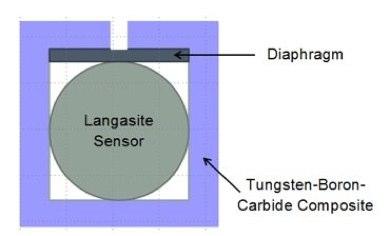Temperature and pressure sensors are vital pieces of monitoring equipment in a nuclear reactor, especially during accident conditions where temperatures and pressures can reach 1400 degrees Celsius and 10,000 PSI respectively. Unfortunately, conventional sensors cannot operate under the high temperatures, pressures and radiation conditions that occur during an accident. By choosing to work with a composite tungsten-boron-carbide material, harmful neutron and gamma ray radiation would be effectively attenuated for the langasite sensor to operate under normal operating conditions as well as extreme accident conditions. The maximum neutron fluence was determined using a TRIM simulation which was the basis for the decision of optimal material composition and thickness of the shielding, which was determined using MCNP simulations.
Team: Britnay Snyder, Hyung Jin Choun, Solana Carlotta
Project Advisor: Dr. Jie Lian

Project Motivation
Three Mile Island and Fukushima have both demonstrated accident situations where the pressure and temperature inside the reactor were unknown to operators. Conventional pressure sensors and conventional temperature sensors fail when exposed to those harsh conditions, which include high pressure, temperature, and radiation. That lack of information regarding internal state can negatively affect how an accident is handled. Our goal was to prevent this information loss and prevent any future accidents from ever reaching a similar severity.
Project Description
Temperature and pressure sensors are vital pieces of monitoring equipment in a nuclear reactor, especially during accident conditions where temperatures and pressures can reach 1400 degrees Celsius and 10,000 PSI respectively. Unfortunately, conventional sensors cannot operate under the high temperatures, pressures and radiation conditions that occur during an accident. By choosing to work with a composite tungsten-boron-carbide material, harmful neutron and gamma ray radiation would be effectively attenuated for the langasite sensor to operate under normal operating conditions as well as extreme accident conditions. The maximum neutron fluence was determined using a TRIM simulation which was the basis for the decision of optimal material composition and thickness of the shielding, which was determined using MCNP simulations.
Results and Accomplishments
The shielding material for our system were chosen as composite of Tungsten and Boron Carbide to effectively shield neutron and gamma radiation. The design of the radiation shield is cylindrical as shown in the figure. Appropriate thickness and the material composition of the shielding material are determined through MCNP simulation. This radiation shield enables the sensor to be functional for five years inside the core.